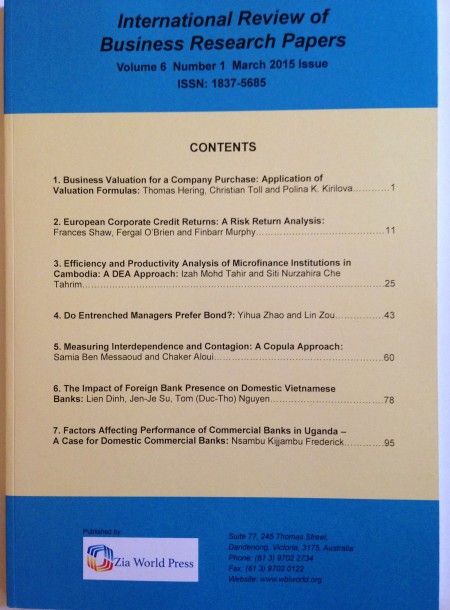International Review of Business Research Papers
Vol. 11. No. 2. , September 2015, Pages: 132 – 157
Modelling Endogenous Growth under Trade Liberalization Regime: The Case of USA & China
Dilip Dutta and Xin Zheng
This paper formulates an endogenous growth theoretical model of two frequently traded and economically integrated asymmetric countries: the United States and China. It contributes to the existing literature by analyzing technology accumulation, human capital accumulation and real GDP growth specifically under the scenario of final product trade, intermediate product trade, physical capital exchange, labor exchange, human capital exchange, as well as spillovers from technology and human capital. It extends previous literature by adding international knowledge spillover as an additional growth determinant through trade liberalization. Trade liberalization’s impacts upon the economy’s short term dynamics and long term equilibrium are associated by the developed country and the developing country’s mutual dependence in technology accumulation, human capital accumulation and international knowledge spillovers. Only policy-stimulated technology accumulation, human capital accumulation and international knowledge spillovers can generate persistently positive effects upon macroeconomic growth of the trading countries. Both US and China should therefore focus on foreign direct investment in technology and education, enhance collaboration in R&D sectors and facilitate the mechanism of international knowledge spillovers in order to enhance their economic growth.
DOI :
http://dx.doi.org/10.21102/irbrp.2015.09.112.11

